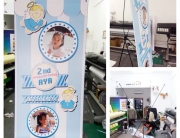Содержание
One thing I have noticed is that each industry comes up with their own terms and acronyms. Unfortunately, these inventions often vary depending on the person you speak to due to a lack of a governing body that decides on an exact definition. Therefore, when it comes to definitions, I always look to ask a variety of persons from across industries on how they would define certain terms. In fact, I took to Twitter and asked those in the industry to submit some responses to a study conducted on Survey Monkey a few results are below. (If you would like to add your definition, the survey is still open here) The survey results are presented below.
As per Gartner, DevOps can significantly improve the delivery pipeline of analytics and AI architectures. DevOps-based teams also deploy much more frequently than regular development teams. At its core, DevOps delivers efficiency by focusing on inter-departmental collaboration and automation. Its strategy has been inspired by another approach with a much bigger scope, called TechOps.
- Since DevOps, active collaboration through shared repositories and tools has become the main point of focus.
- NoOps is solely targeted at a cloud-based architecture where infrastructure can be less of a burden or the complete responsibility of the service provider.
- These policies also administer resource allocation to ensure a better return of investment .
- To me, DevOps is essentially a team of developers designing, building, deploying, and maintaining software of any kind.
For example, some events may use the term Technology Operations Centre while another may call it an IT Command Centre, but the functions are very similar. For this guide we have used either the most common term or the one we thought made most sense at the time. Centralized log management should also be integrated with change management automation and orchestration systems for a comprehensive tech stack. NoOps is solely targeted at a cloud-based architecture where infrastructure can be less of a burden or the complete responsibility of the service provider. Cloud services like AWS and Azure offer both DevOps and TechOps services on their cloud platforms.
Devops Goals
Wherever you put the word “security,” however, DevSecOps is at its heart a collaboration of development and security with the goal of creating resilient software for consumers. One way to help with alignment is to ensure everyone is working with the same tools and data wherever possible. When it comes to DevOps, everything about their role revolves around speed. DevOps’ main goals include shortening the software development lifecycle as well as shortening time to market . In the above sections, we discussed the impact of each of these methods on the software development lifecycle.
Most services now offer cloud infrastructure as code through API services, removing the need for dedicated TechOps personnel. Continuous Feedback – The feedback process happens through all the stages of the value stream. This ensures that bugs are detected early on and fixed at the earliest, thereby fostering faster detection and recovery.
Continuous feedback ensures that only deployable code reaches the production. CloudOps and DevOps are not mutually exclusive terms as the Development and Operations teams collaborate closely in a CloudOps environment. The aim of this guide is for it to be useful and provide knowledge that others can build upon. If you would like to improve this guide for others, please let us know. To resolve major incidents or address their root causes, it requires transparency and full information sharing.
Itops Vs Devops: What Is The Difference?
As both are concerned with different things, many enterprises employ both DevOps and TechOps. DevOps is one of the newest technological innovations that is finding great appreciation in enterprises globally. Companies of all shapes and sizes are coming forward to sing DevOps’ praises and mention the kind of efficiency of its adoption. Starting as a software methodology, DevOps has evolved into a culture of its own.
However, it is still a way off as some critical aspects such as testing and advanced infrastructure and networking configurations require manual intervention. DevOps aims to bring all these teams together without impacting their specialty while fostering a more collaborative environment. This environment provides greater visibility of the roles and responsibilities of each team and team member. However, because TechOps is more focused on a particular field, it is more of a professional role.
These automated systems ensure the application is stored and systematically deployed from version control. However, to me, this is not different than being a part of the DevOps team. This is because all solutions—big, small, agile, waterfall, temporary, or permanent—must include security and privacy from the start to be called holistic and inclusive solutions. Creating anything else is not inclusive; it’s not working with your consumers and teams to identify the requirements and needs properly. It’s not respecting the sensitive data you are provided access to via the solution.
How To Improve Devops Workflows Using Containers
In many cases human error will be a cause or a contributing factor. By identifying all root causes, including human error, they can be addressed so they don’t happen again. People will make mistakes, but the team will be better off having learned from those mistakes.
When choosing TechOps or DevOps, it is crucial to see what is the particular use case. If an enterprise is looking to build up its cloud infrastructure and will need an approach to plan, build, and maintain it, TechOps is the way to go. However, if an enterprise is trying to boost its software quality while not expanding resources, it should look into DevOps. DevOps was born of the mindset that high-caliber software is expected in less time and requires less effort in today’s era. By diminishing or eliminating silos, DevOps reduces the hassle of moving software through different departments during development. It also emphasizes automating as much of the process as possible, such as unit-testing and integration.
To make this a success, it has to be a collaborative effort amidst IT operations, cloud architecture, security & compliance, etc. The above definitions were of interest to me because the first conceptualization separates the development team from the operations whereas the second viewpoint discusses the development team and their practices. To me, DevOps is essentially a team of developers designing, building, deploying, and maintaining software of any kind. The goal of this team is to do this efficiently and in a manner that’s aligned with a set standard decided by the organization. Speed is a piece of this, security another, but it’s the holistic approach through which the developers proceed that is important here.
Due to that, it may hinder the overall collaboration within a delivery pipeline as well as put more burden on the developers to manage the application lifecycle without any operational assistance. However, the credibility of the cloud framework largely depends upon how the services are maintained to meet customer expectations. The success of cloud computing largely depends on whether the system is secure and compliant, can the operational costs be optimized, and what additional benefits can be availed. S not enough that the IT Ops team manages the cloud-based functions and activities.
What Is Noops?
ITOps includes job titles like system administrator, network administrator, and help desk. However, it may be an excellent choice for monolithic and slow-moving software developments, such as in the financial services industry. Yet ITOps becomes obsolete in rapidly evolving software developments. As modern software developments come under this category, ITOps is not a suitable candidate for such environments. Continuous Delivery – The basic flow of continuous delivery shows the process flow from the development to the QA to IT Operations and finally to the customers.
Similar to the ITOps role, the DevOps position can greatly vary from company to company. Shanika Wickramasinghe is a software engineer https://wizardsdev.com/ by profession and a graduate in Information Technology. Shanika considers writing the best medium to learn and share her knowledge.
Differentiating Between Techops & Devops
This approach ensures that you have a single point of control over all the applications and services running in the cloud. Hence you build a centralized system to manage all the cloud machine instances, storage instances, security, network, and governance. Every project requires a different approach, which is why the ITOps team needs to accommodate new infrastructure requirements. For instance, the company can work on a big data project that requires a lot of storage, then move to a project where it’s paramount to read data in the fastest possible way.
Apart from designing and developing business solutions, Emad is a content writer who loves to document technical learnings and experiences so that peers in the same industry can also benefit from them. Cloud services like AWS and Azure have TechOps as a core part of their public cloud services. Running and ensuring that cloud service is always at the users’ disposal without any hindrance is usually what a TechOps administrator is expected to do. The TechOps team is also involved in the planning to improve the IT infrastructure as per new requirements. Now we have products like Copado that make Release Management extremely fast and seamless. These are release management automation tools that are a must-have for all organizations that use SAAS applications like Salesforce.
NoOps and DevOps are similar in a sense as they both rely on automation to streamline software development and deployment. However, DevOps aims to garner a more collaborative environment while using automation to simplify the development process. The gist of adapting DevOps in your organization is that it can power previously disconnected tasks such as infrastructure TechOps Lead job provisioning and application deployments through a single unified delivery pipeline. Historically, IT departments acted as a single team, but they have been increasingly divided into specialized departments or teams with specific goals and responsibilities. This increased specialization is vital for quickly adapting to the evolving technological landscape.
DevOps strives to bring the Development and Operations team into a close collaboration. While, CloudOps focuses on high availability, reduced downtime, and continuous operation in a public cloud. DevOps is a part of CloudOps and not the other way to reiterate the idea we started with. The continuous integration, improvement, feedback, and implementation tasks that happen as a part of DevOps make CloudOps incredibly efficient. Self-provisioning is where the cloud admin allows the cloud users to allocate their own machines and track their usage.


